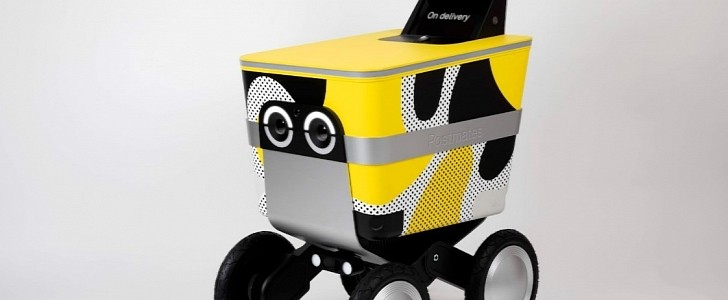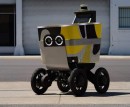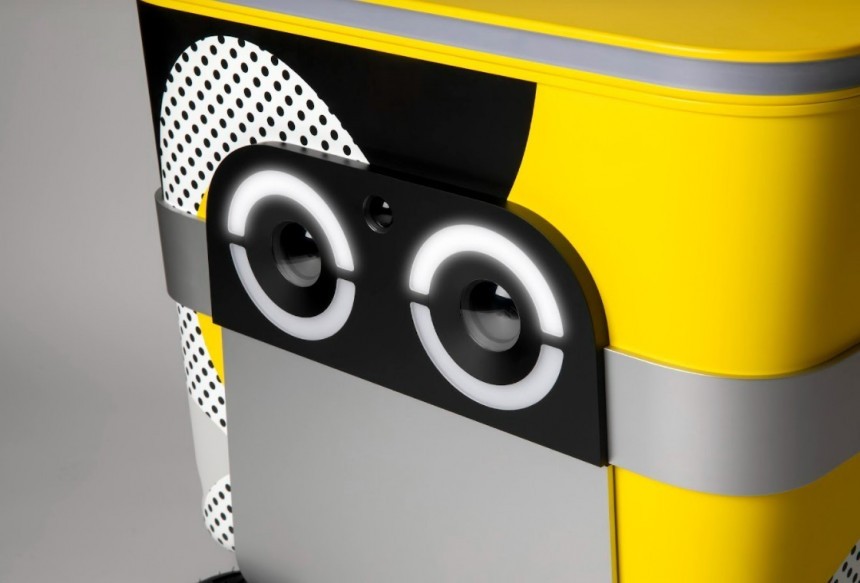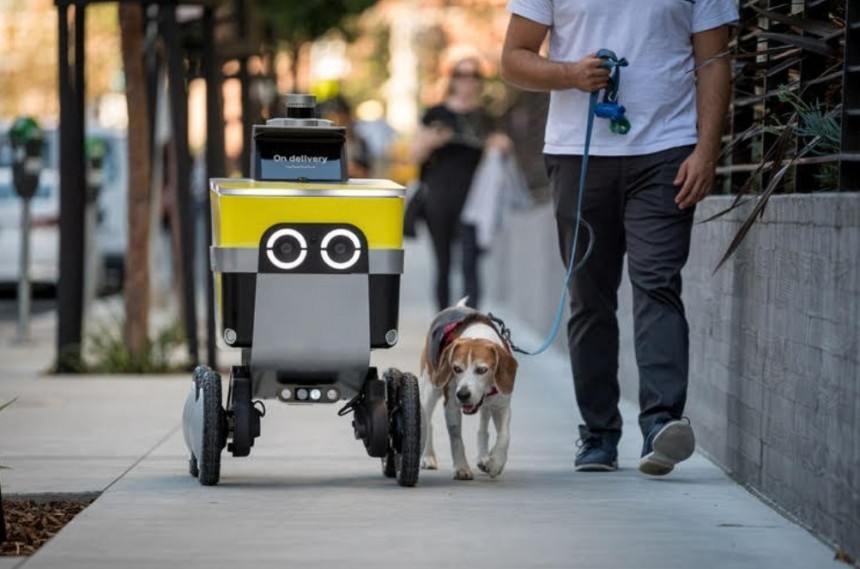As technology advances, we strive to create things to improve and simplify our day-to-day life, in the most sustainable way. This is where Serve comes in, the modernized way to deliver goods.
Movies seldom portray robots as the ultimate evil (see Avengers: Age of Ultron). But the technology around us teaches us the reality isn’t that grim. Artificial Intelligence is here to stay, and it has lessened our chores, getting one task done after another. Some examples include the virtual assistants from high-tech giants, Amazon, Google, and Apple, amongst the most famous ones. While physically they don’t occupy much space, they ease your work, reminding you tasks, creating reservations, ordering stuff, or just controlling devices in your household.
But there’s another kind of robot out there, that physically gets things done – the Serve. Created by Serve Robotics, the semi-autonomous rover makes deliveries easier, and safer, under the current conditions. In a race to create self-driving cars that don’t need a human person to physically be behind the wheel, there are ways with less environmental impact that do the job just as well, and here’s where the company really shines.
So, who’s Serve? It started out inside the food delivery service Postmates. After Uber purchased the company in late 2020 for around $2.65 billion, their robotics division split from its original brand, and in March 2021, they announced they created an independent company, now called Serve Robotics.
The new startup included having the rights over the two-eyed semi-autonomous robot, Serve. The goal is to provide accessible and sustainable deliveries to everyone, and the robot gets the company closer to it.
According to Dr. Ali Kashani, co-founder and CEO of Serve Robotics he thinks that “over the next two decades, new mobility robots will enter every aspect of our lives, first moving food, then everything else.”
Despite the fact that we know technology advances fastly, it’s still surprising to encounter a robot nowadays. Rapper Saweetie was one of the celebrities to see Serve in the natural habitat, crossing the street all by itself towards its destination. Drew Barrymore also had an encounter with the rover, and people are still taken aback by this technology.
But I bet that won’t last long, and people would get just as accustomed to delivery robots as they do with just about anything else.
What’s particular about Serve is that its two eyes help him use cameras and Ouster's 3D Lidar sensors to navigate its four wheels. In the past, San Francisco banned delivery service robots, because they kept bumping into people. And we get that. It could be scary to walk and have a robot hit you, be it as small as it is.
But Serve Robotics jumped in and created the semi-automated rover, which can drive on sidewalks along with pedestrians, and can avoid fire hydrants. I’m saying semi-automated because Serve does need a human brain behind all the technology – so the robots still need us. For now. In case it encounters any issues, an employee from Serve Robotics’ team monitors the rover and can take over, and control it from afar.
In the company’s pursuit of sustainability, Serve is also all electric, and has less environmental impact than a larger vehicle. It also had an interesting and appealing appearance. Designed to look like a futuristic shopping cart, Serve comes with a 50 lb (22.7 kg) storage capacity, and a total length of 30” (76.2 cm), an estimated width of 21” (53.3 cm), and a height of 40” (101.6 cm). Given the prior issues with other robots bumping into people, Serve has a top speed 3 mph (4.8 kph). It can also travel 30 miles on a single charge, and customers receive their meals by using a touchscreen on the rover.
There are also several other companies who jumped on the opportunity to create the best delivery experience. Among the most famous there’s Nuro, Amazon’s Scout robot, the Starship delivery robot, Eliport, AutoX (which, as the word implies, is not a robot, but a driverless car) and Robomart.
Other benefits for the semi-autonomous rover are that it reduces delivery costs for companies, and it lessens traffic while increasing local restaurant sales. Considering traffic is an issue everywhere, creating a robot that delivers goods faster and safer sounds like a great idea. But thinking about people’s fear that robots would end up stealing our jobs, where do delivery people fit?
But there’s another kind of robot out there, that physically gets things done – the Serve. Created by Serve Robotics, the semi-autonomous rover makes deliveries easier, and safer, under the current conditions. In a race to create self-driving cars that don’t need a human person to physically be behind the wheel, there are ways with less environmental impact that do the job just as well, and here’s where the company really shines.
So, who’s Serve? It started out inside the food delivery service Postmates. After Uber purchased the company in late 2020 for around $2.65 billion, their robotics division split from its original brand, and in March 2021, they announced they created an independent company, now called Serve Robotics.
The new startup included having the rights over the two-eyed semi-autonomous robot, Serve. The goal is to provide accessible and sustainable deliveries to everyone, and the robot gets the company closer to it.
Despite the fact that we know technology advances fastly, it’s still surprising to encounter a robot nowadays. Rapper Saweetie was one of the celebrities to see Serve in the natural habitat, crossing the street all by itself towards its destination. Drew Barrymore also had an encounter with the rover, and people are still taken aback by this technology.
But I bet that won’t last long, and people would get just as accustomed to delivery robots as they do with just about anything else.
What’s particular about Serve is that its two eyes help him use cameras and Ouster's 3D Lidar sensors to navigate its four wheels. In the past, San Francisco banned delivery service robots, because they kept bumping into people. And we get that. It could be scary to walk and have a robot hit you, be it as small as it is.
In the company’s pursuit of sustainability, Serve is also all electric, and has less environmental impact than a larger vehicle. It also had an interesting and appealing appearance. Designed to look like a futuristic shopping cart, Serve comes with a 50 lb (22.7 kg) storage capacity, and a total length of 30” (76.2 cm), an estimated width of 21” (53.3 cm), and a height of 40” (101.6 cm). Given the prior issues with other robots bumping into people, Serve has a top speed 3 mph (4.8 kph). It can also travel 30 miles on a single charge, and customers receive their meals by using a touchscreen on the rover.
There are also several other companies who jumped on the opportunity to create the best delivery experience. Among the most famous there’s Nuro, Amazon’s Scout robot, the Starship delivery robot, Eliport, AutoX (which, as the word implies, is not a robot, but a driverless car) and Robomart.
Other benefits for the semi-autonomous rover are that it reduces delivery costs for companies, and it lessens traffic while increasing local restaurant sales. Considering traffic is an issue everywhere, creating a robot that delivers goods faster and safer sounds like a great idea. But thinking about people’s fear that robots would end up stealing our jobs, where do delivery people fit?










